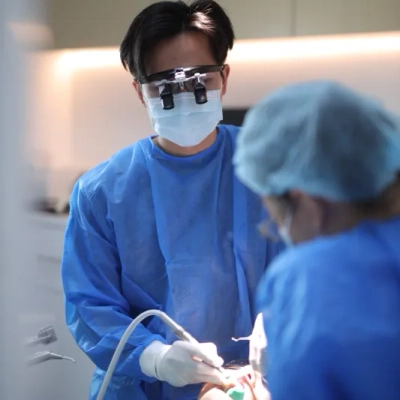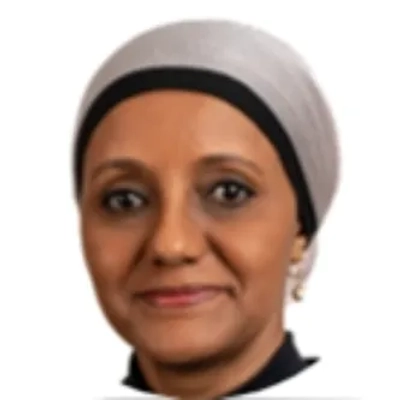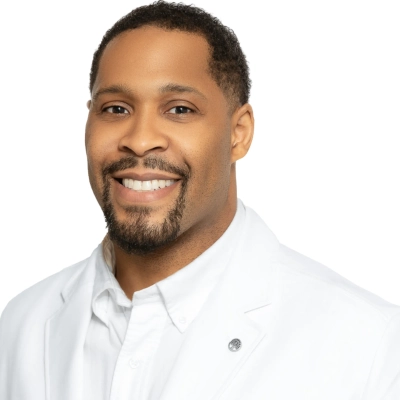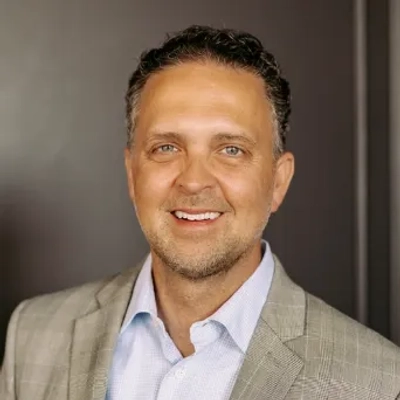8 Ways Interdisciplinary Collaboration Improves Patient Outcomes
Recent findings demonstrate that healthcare teams working across specialties achieve remarkable improvements in patient health, with experts highlighting eight specific collaborative approaches that transform treatment outcomes. The evidence spans multiple medical scenarios, from chronic shoulder dislocations to treatment-resistant depression, showcasing how coordinated care creates solutions where traditional single-provider methods fall short. These practical examples from healthcare professionals reveal how breaking down communication barriers between specialists leads to faster diagnoses, more effective treatment plans, and ultimately, better patient experiences.
Team Approach Reversed Chronic Shoulder Dislocations
I treated a patient with Ehlers-Danlos Syndrome who kept dislocating her shoulder during basic daily activities. She'd been bounced between orthopedists, pain management doctors, and two other PT clinics for over a year with zero progress--everyone was treating her like a standard shoulder instability case.
The breakthrough happened when I got her rheumatologist, occupational therapist, and a geneticist on a conference call together. The OT identified that her workspace setup was forcing repetitive overhead reaching that her hypermobile joints couldn't handle. The rheumatologist adjusted her medication timing so she had better connective tissue support during her therapy sessions. I focused on proprioceptive training instead of traditional strengthening since her collagen couldn't support typical protocols.
Within three months she went from 4-5 dislocations per week to zero. The key was that each provider adjusted their approach based on what the others were doing--the OT's ergonomic changes meant I could progress exercises faster, and the medication timing meant her tissues could actually benefit from the training stimulus.
Most interdisciplinary care fails because everyone works in silos and sends reports no one reads. We had 15-minute calls every two weeks where everyone actually talked. That real-time communication meant we caught problems early and adapted the plan weekly instead of waiting months between appointments to realize something wasn't working.
Communication Loop Transformed Treatment-Resistant Depression
I work with a lot of medical professionals at MVS Psychology Group, and one case that stands out involved a young patient dealing with treatment-resistant depression who'd been bouncing between providers without progress. Her psychiatrist reached out after medication adjustments weren't helping, and we decided to coordinate care directly rather than just swapping reports.
We set up a proper communication loop--I updated the psychiatrist after our EMDR sessions, they adjusted medication timing around our therapy schedule, and we brought in her GP who'd initially referred her. What made it work was that we actually talked to each other regularly, not just at crisis points. Within three months, she went from barely functioning to returning to work, something neither of us could have achieved alone.
The biggest difference was treating her as one person with interconnected issues, not compartmentalizing her mental health from her physical symptoms and medication effects. At our practice, we make it standard protocol to actively involve the referring doctor or specialist in treatment--it's baked into how we operate in Melbourne. Most practices send a discharge summary; we send updates throughout treatment and pick up the phone when something shifts.
That collaborative model is why we track not just therapy outcomes but how well the whole care team communicates. It takes more time upfront but cuts treatment duration significantly when everyone's working from the same playbook.

Data Collaboration Accelerates Rare Disease Treatment
Great question--I'll share something from the data collaboration side that completely changed outcomes for rare disease patients.
We worked with a consortium of pediatric hospitals across the UK who were each treating kids with ultra-rare genetic conditions--we're talking diseases where maybe 5-10 cases exist globally. Each hospital had fragments of data, but no single institution had enough patients to identify treatment patterns. Using our federated platform, we enabled these teams to run joint analyses without moving any patient data from their systems. Within three weeks, researchers identified a drug repurposing opportunity that had a 70% response rate across 8 patients--something that would've been statistically invisible at any single site.
What made it work was that the data never left the hospitals' firewalls, so legal and ethics teams approved it fast. No months-long data transfer agreements or privacy negotiations. The clinicians could ask questions across all sites simultaneously and get answers in real-time, like they were querying one massive database. One pediatric oncologist told me this approach cut their evidence-gathering time from "potentially never" to under a month.
The key was removing friction between the institutions while keeping IT and compliance people happy. When you're dealing with kids who don't have time to wait for traditional data-sharing bureaucracy, federated analysis isn't just efficient--it's literally life-saving. We've since scaled this model to over 40 rare disease networks.

Shared Care Platform Stabilized Diabetic Complications
A patient with uncontrolled diabetes and early vision changes benefited greatly from our collaboration with an endocrinologist and a nutritionist outside our network. Instead of working in isolation, we established a shared care plan through a secure communication platform where each provider updated the patient's metrics and recommendations in real time. This coordination allowed us to adjust medication timing based on glucose trends while aligning dietary counseling with ophthalmic findings.
Within four months, the patient's A1C dropped from 9.2 to 6.8, and retinal swelling stabilized without further intervention. The success came from consistent, structured communication rather than fragmented referrals. Every provider saw the same data, and the patient received unified messaging that reinforced trust and adherence. The case demonstrated how interdisciplinary care, when built on transparency and shared accountability, can convert complex conditions into manageable, sustainable outcomes.

Coordinated Dental Specialists Save Failing Smile
I've worked with periodontists and oral surgeons on full mouth rehabilitation cases where patients need both gum grafting and implant placement. One patient came to me wanting veneers but had severe bone loss that would've made any cosmetic work fail within months. I brought in a periodontist first, we staged the treatment over 8 months, and now three years later everything's still rock solid.
The key was being honest during the initial consultation that I couldn't do it alone. Most patients appreciate transparency over false promises. We created a shared treatment timeline where each specialist knew exactly when to hand off care--the periodontist rebuilt her gum tissue, I placed temporary restorations to maintain aesthetics during healing, then we finished with the final cosmetic work once everything stabilized.
What made it work was having regular catch-up calls between appointments. We'd review progress photos together and adjust the plan if healing wasn't tracking right. I've seen too many cases where specialists work in silos and patients fall through the cracks because no one's coordinating. My Master's training in Germany hammered home that complex cases need team protocols, not individual heroics.
The patient ended up spending less overall because we didn't waste time redoing failed work. She also referred four family members afterward because the process felt organized rather than chaotic.

Direct Doctor Communication Resolves Persistent Gum Disease
I had a patient come in with severe gum inflammation and chronic bad breath that wasn't responding to normal cleanings. During the exam, I noticed unusual tissue patterns and asked about their medical history--turns out they'd recently been diagnosed with diabetes but weren't managing it well.
I reached out directly to their endocrinologist and we coordinated a treatment timeline. They adjusted the diabetes medication first, which brought blood sugar under control, then I was able to perform a deep cleaning that actually held. Within 8 weeks, their gum health improved dramatically and the halitosis resolved--something that wouldn't have happened if we'd worked in silos.
What made it work was direct communication, not just sending records back and forth. I called the endocrinologist's office, we discussed the inflammation markers I was seeing, and they shared how uncontrolled glucose was feeding the bacterial growth. At Snow Tree Dental, we keep detailed notes on systemic conditions now because oral health is connected to everything--heart disease, diabetes, even pregnancy outcomes.
The key lesson: don't treat the mouth in isolation. When I see warning signs like persistent inflammation or bone loss, I ask about their whole health picture and loop in their other doctors when needed. That phone call saved my patient months of ineffective treatment and probably prevented tooth loss down the road.

Physician Humility Creates Path to Recovery
I had a patient myself--actually saved my own life when a doctor did something that doesn't happen enough: he didn't pretend to have all the answers. I was deteriorating, tests kept coming back "normal," but I knew something was wrong. This doc listened, then reached out to two of his colleagues behind the scenes. Two weeks later, he called me with a plan they'd workshopped together. It worked.
That humility is what I try to bring to GAIN now. I've got a patient with complex mast cell issues and POTS who was being dismissed as anxious by multiple specialists. I looped in a cardiologist I trust and a GI doc who actually understands EoE, not through formal referrals but direct phone calls. We synced our treatment timelines--stabilized her autonomic symptoms first, then addressed the gut inflammation, then reintroduced foods systematically. She went from bedbound to functional in four months.
What made it work wasn't the care coordination software or official channels--it was picking up the phone and saying "here's what I'm seeing, what are you seeing?" Too many providers send records into the void and call it collaboration. Real interdisciplinary care means ego takes a back seat and the patient's timeline becomes everyone's priority. When I don't know something, I say it out loud and bring in someone who does, just like that doctor did for me.
Same-Day Expertise Provides Quick Diagnosis
"At Doctor Edges, our collaborative approach between direct internal medicine and dermatology allows us to deliver truly comprehensive care. One memorable case involved a member who presented with chest discomfort and an unusual lump. Because she was part of our direct care membership, I was able to perform an in-office ultrasound immediately, which revealed a superficial mass. Within ten minutes, Dr. Ekpo joined me, used the same imaging guidance to perform a biopsy, and sent the specimen for analysis. The results confirmed a benign tumor, and we coordinated a referral to plastic surgery within 48 hours. This kind of seamless, same-day interdisciplinary collaboration is what makes direct care so powerful--we're able to combine expertise, technology, and access to deliver peace of mind and faster outcomes for our patients."
-- Dr. Joseph Claiborne, III, MD, FACP, Direct Internal Medicine, Doctor Edges




